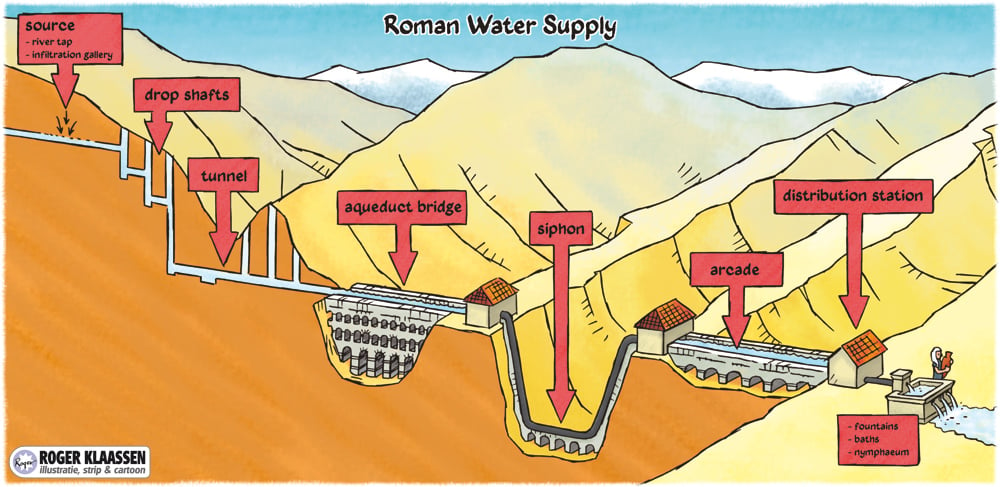this post was submitted on 02 Oct 2024
310 points (99.4% liked)
Illustrations of history
924 readers
75 users here now
This magazine is for sharing artwork of historical events, places, personages, etc. Scale models and the like also welcome!
Generally speaking, actual photos of a historical item should go to [email protected]
Photos of ruins should go to [email protected]
Photos of the past should go to [email protected]
founded 8 months ago
MODERATORS
you are viewing a single comment's thread
view the rest of the comments
view the rest of the comments

Same way a fuel siphon works, as long as the opening is below the inlet, and the rest of the tube is full and sealed, the water will flow.
https://en.m.wikipedia.org/wiki/Siphon
How did the Romans seal that apparatus? Cement? Even that would fail rather quickly
Lead Pipes: http://www.romanaqueducts.info/siphons/siphons.htm
Also some terracotta pipes, but not really clear how its sealed.
It never would have occurred to me that siphons work that way, too!
By why did they even need one here though?
Because it's simpler to build siphons through large valleys instead of 100 meter high 10 kilometer long aqueducts.
But you have to keep water pressure throughout the length of that tube, how did they do that with their materials?
They had metal working and also knew how to work clay. Plus finding water leaks isn't difficult to know what specific points need attention, then you just add material until it stops leaking. The pipes might have been large enough to work from the inside if the flow was diverted.
They also wouldn't need a perfect seal, just a good enough seal that the majority of the water makes it to the other side.
I'd bet that there were teams of people whose full-time job was to maintain each of the siphons rather than the more modern approach of "build it and then bury it under asphalt because it will probably be fine for years" plumbing takes today.
There is no additional pressure besides from the height/drop, so unless so have a substantial leak where you lose a lot of water, it "just works".
For demonstration purposes only.
Valley was too deep for the aqueduct but they didn’t want to make the drawing taller just for that
Romans were notoriously averse to making drawings taller.
Yeah, but the water pipe goes back up meaning that there is near equal pressure on either side of the U-Siphon, right? Kind of negates the siphon, in a sense?
I'm no fluid dynamics expert. Just a casual Joe.
Its a bad diagram, the other side needs to be lower :/